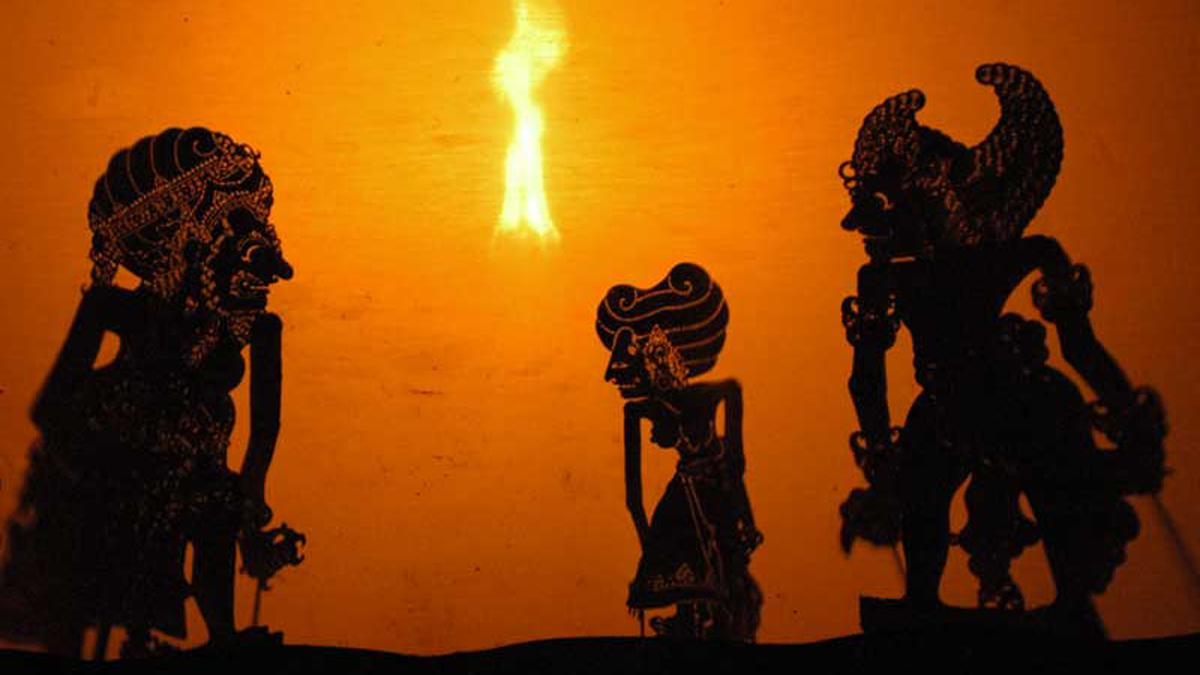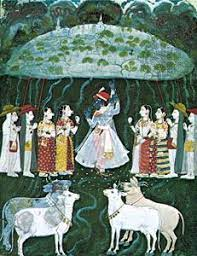Indian Heritage & Culture
Allah Baksh and Mewari Style Painting
- 06 Oct 2023
- 9 min read
For Prelims: Allah Baksh and Mewari Style Painting, Maharaja Jai Singh, Mahabharata, Indian Miniature Painting
For Mains: Indian Miniature Painting, Indian Painting
Why in News?
Allah Baksh, a Mewari miniature painter late 17th century, portrayed the Interpretation of Mahabharata in his Painting and is known for his intricate and delightful representation.
Who was Allah Baksh?
- About:
- Allah Baksh was a court painter employed by Maharaja Jai Singh of Udaipur during the late 17th century.
- Paintings and Portrayal:
- Each painting by Allah Baksh meticulously portrays the details of characters' costumes, the flora and fauna in the background, and the depiction of magical and mystical events.
- These miniatures encapsulate a delightful representation of the Mahabharata, showcasing a dialogue between the verbal and visual imaginations of the poet and the painter.
What is Mewari Style Miniature Painting?
- About:
- Mewār painting, one of the most important schools of Indian miniature painting of the 17th and 18th Centuries. It is a school in the Rājasthanī style and was developed in the Hindu principality of Mewār (in Rājasthān state).
- It is a highly refined and intricate form of painting characterized by its attention to detail, vibrant colors, and meticulous craftsmanship.
- The works of the school are characterized by simple bright color and direct emotional appeal.
- The comparatively large number of paintings to which dates and places of origin can be ascribed make possible a more comprehensive picture of the development of painting in Mewār than in any other Rājasthanī school.
- Famous Painter: Sahibdin (painted the Ragamala in 1628).
What is Miniature Painting?
- About:
- Miniature paintings are colorful handmade paintings very small in size. One of the outstanding features of these paintings is the intricate brushwork which contributes to their unique identity.
- The colors used in the paintings are derived from various natural sources like vegetables, indigo, precious stones, gold and silver.
- They were often painted for either books or albums, on perishable material including paper, palm leaves and cloth.
- The Palas of Bengal are considered the pioneers of miniature painting in India.
- The tradition of miniature paintings was further taken forward by the artists of various Rajasthani schools of painting, including the Kishangarh, Bundi Jaipur, Mewar and Marwar.
- Schools of Miniature Painting:
- Pala School: The earliest Indian miniature paintings are related to the Pala School dating back to the 8th century A.D.
- This school of painting emphasized on the symbolic use of colors and the themes were often taken from the Buddhist tantric rituals.
- Jain School: The Jain School of painting gained prominence in the 11th century A.D when religious texts like ‘Kalpa Sutra’ and ‘Kalkacharya Katha’ were portrayed in the form of miniature paintings.
- Mughal School: The amalgamation of Indian paintings and Persian miniature paintings gave rise to the Mughal School of miniature painting.
- Interestingly, Persian miniature paintings were largely influenced by Chinese paintings.
- Rajasthani School: The decline of the Mughal miniature paintings resulted in the rise of the Rajasthani School. Rajasthani School of painting can be further divided into various schools depending on the region they were created in.
- The Mewar School, Marwar School, Hadoti School, Dhundar School, Kangra and Kullu Schools of art are all part of Rajasthani School of painting.
- Pahari School: Pahari School of miniature painting emerged in the 17th century A.D. These paintings originated in the kingdoms of North India, in the Himalayan region.
- Deccan School: The Deccan School of miniature painting flourished in places like Ahmednagar, Golconda, Tanjore, Hyderabad and Bijapur from 16th to 19th century A.D.
- The Deccan School of miniature painting was largely influenced by the rich traditions of the Deccan and the religious beliefs of Turkey, Persia and Iran.
- Pala School: The earliest Indian miniature paintings are related to the Pala School dating back to the 8th century A.D.
UPSC Civil Services Examination, Previous Year Question (PYQ)
Q. The well-known painting “Bani Thani” belongs to the (2018)
(a) Bundi school
(b) Jaipur school
(c) Kangra school
(d) Kishangarh school
Ans: (d)
Exp:
- Kishangarh School
- Bani Thani painting belongs to the Kishangarh School. Kishangarh School (18th century) of Indian painting emerged in the Princely State of Kishangarh (Central Rajasthan).
- The school is clearly distinguished by its individualistic facial type and its religious intensity. The sensitive, refined features of the men and women are drawn with pointed noses and chins, deeply curved eyes, and serpentine locks of hair.
- The brilliant series of paintings on the Radha– Krishna theme were due largely to the inspiration of Raja Savant Singh (reigned 1748–57). He was a poet also, who wrote under the name of Nagari Das.
- The master artist largely responsible for transmitting the romantic and religious passions of his patron (i.e., Raja Savant Singh) into new and fresh visual images was Nihal Chand.
- Kangra School
- Around mid-18th century, as forces of Nadir Shah (1739) and Ahmad Shah Abdali (1744-1773) pillaged the Mughal capital of Delhi and surrounding areas, the birth of the Kangra School of painting at Haripur-Guler under the patronage of Raja Govardhan Chand (1744-1773) took place as he provided asylum to refugee artists trained in the Mughal style of painting.
- Kangra painting is named after Kangra (Himachal Pradesh), a former Princely State.
- These artists who were traditionally trained in theMughal style (which predominately featured flattering portraits of their patrons and hunting scenes), now incorporated themes from the love poetry of Jayadeva, Bihari and Keshav Das who wrote ecstatically of the love of Radha and Krishna.
- Bundi School
- Between 17th-19th century, Bundi School of painting developed in the Princely State of Bundi and its neighbouring principality of Kotah (now Kota) both in present-day Rajasthan.
- Its characteristic features are dramatic night skies, distinct of depicting water by light swirls against a dark background with special focus on highlighting lush vegetation.
- The painting style reached its peak during the first half of the 18th century, but continued to flourish into the 19th century and had found exceptional patron like Maharao Ram Singh II (1828–66) under whom the art witnessed its brilliant phase.
- One of the earliest examples of the Bundi paintings is the Chunar Ragamala painted in 1561.
- Bundi paintings emphasized on hunting, courtscenes, festivals, processions, life of nobles, lovers,animals, birds and scenes from Lord Krishna’s life.
- Jaipur School
- As the rulers of Jaipur (Amer) Princely State had close affiliation with the Mughals, the art which developed between the late 16th and early 18th century had syncretic elements of both Rajasthani style (which predominated the art style between 16th-17th century) and Mughal style.
- With patronage of rulers like Savai Jai Singh and Pratap Singh, splendid portraits (aristocratic in nature) and large paintings centred around Lord Krishna became a signature of Rajasthani style.






